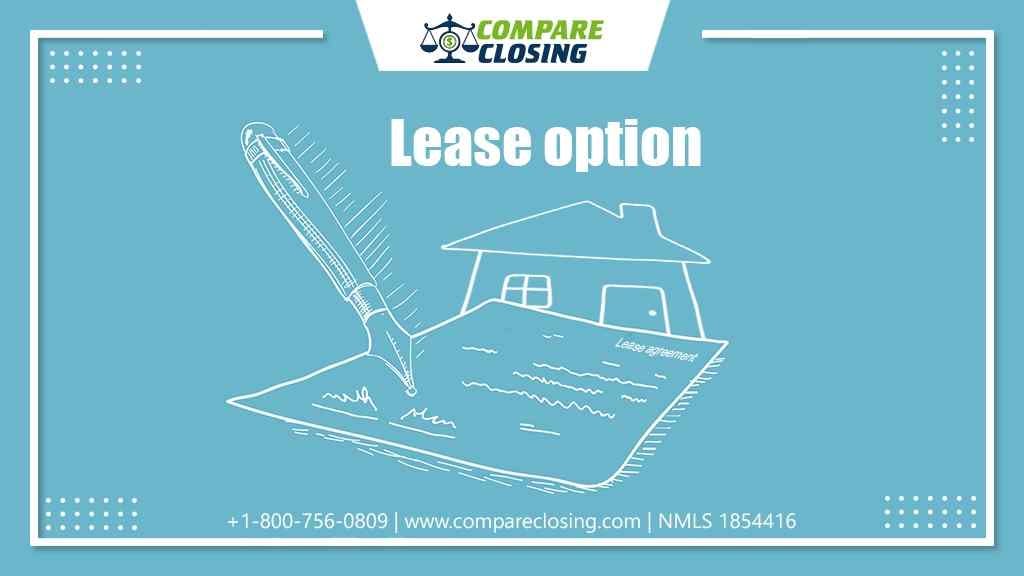
About Lease Options
When you are looking to buy a home there are a lot of things that a buyer needs to be prepared with like a good credit score, down payment, and commitment to ownership.
However, what if you don’t have a credit score that could qualify you for a mortgage?
Or what if you don’t have enough money for the down payment to purchase the property?
There is a way you can prepare to buy that home through the lease option. In this post, we will understand what is a lease option and how it works.
What Is A Lease Option in Real Estate?
A lease option is an agreement or a contract through which a tenant can purchase a property in the future based on today’s market price once the lease ends.
A lease with the option to buy also gives the tenant / potential buyer time to build credit and save money for the down payment to buy the property.
Once you enter into a lease option, it prevents the seller to accept any future orders from other buyers. A lease option is also referred to as rent to own or lease with the option to purchase.
How Does The Lease Option In Real Estate Work?
The rent to purchase is a process of leasing a home to buy it at a future date. This option depends on location, price, terms, and time.
In a lease option contract, both seller and the tenant/potential buyer decide on the cost of the purchase option.
Usually, this amount is forfeited if the buyer is unable to purchase the property at the end of the lease. After that, both parties will finalize the purchase price of the property which is decided before the lease option contract is signed.
The next step in the process is to decide on the tenure of the contract. Usually, this period could be anywhere between 1-and 3 years.
Once the tenure is finalized, both parties will then agree upon the amount of rent that the buyer/tenant would be paying every month.
The rent is usually higher than the market rent as an additional portion in the rent payment goes towards the purchase price which covers the down payment for purchasing the property towards the end of the lease option agreement.
For example, if the monthly market rent for the house is $1500 and the seller charges $180, the additional $300 would be adjusted towards the purchase price of the property agreed in the contract.
What Are The Pros and Cons Of The Lease Option?
Pros Of Lease Option:
For a seller, it can be a fast way to get a tenant for your house which helps you to initiate collecting rent and get a cash flow.
The rent-to-own agreement also tends to attract better tenants as they plan to experience homeownership someday.
You as a seller can also get the tax benefits as the tenant does not own the property unless they exercise their option to buy the property.
If the tenant is unable to buy the property, you will benefit from the forfeited money that the seller pays in addition to the rent as an option fee.
As a buyer, you get 1 to 3 years to accumulate funds for the down payment. In such an agreement, the seller is obligated to sell the property to the buyer at the end of the lease irrespective of the current sales price.
If your credit score does not qualify for a mortgage, you get time to build the credit so that you can qualify for a mortgage in the future and buy the property.
Cons Of Lease Option:
For the seller, if the property value is increased more than what you have agreed upon on the lease option contract, you could lose the opportunity to sell the property at a higher price.
In the lease option contract, if the buyer is unable to purchase the property at the end of the lease agreement, though you get to keep the additional money that you have collected from the buyer, you either have to put your house on the market or find another tenant to replace the current one which is a time-consuming process and could put a stop to your cash flow.
For the buyer, if you fail to purchase the home after the end of the lease period due to any reason, you would lose on the option fees and also the additional amount that you pay towards the sales price of the property.
If the price of the property drops at the end of the lease period, you might end up paying higher than the market value of the property.
If the landlord defaults on the mortgage payments the property may end up being foreclosed and you could lose the position on the home.
Conclusion
The lease-to-buy option could be a great solution for both buyer and seller. However, it is suggested to also consider the risk factors included for both parties if they are getting into a lease option agreement.
There are very few realtors that have properties listed with rent-to-buy options. You can find the lease option contract option online.
However, it is suggested that you run it through an attorney ensuring everything is good to go in the agreement.
https://www.compareclosing.com/blog/what-is-a-lease-options-in-real-estate/
Comments
Post a Comment